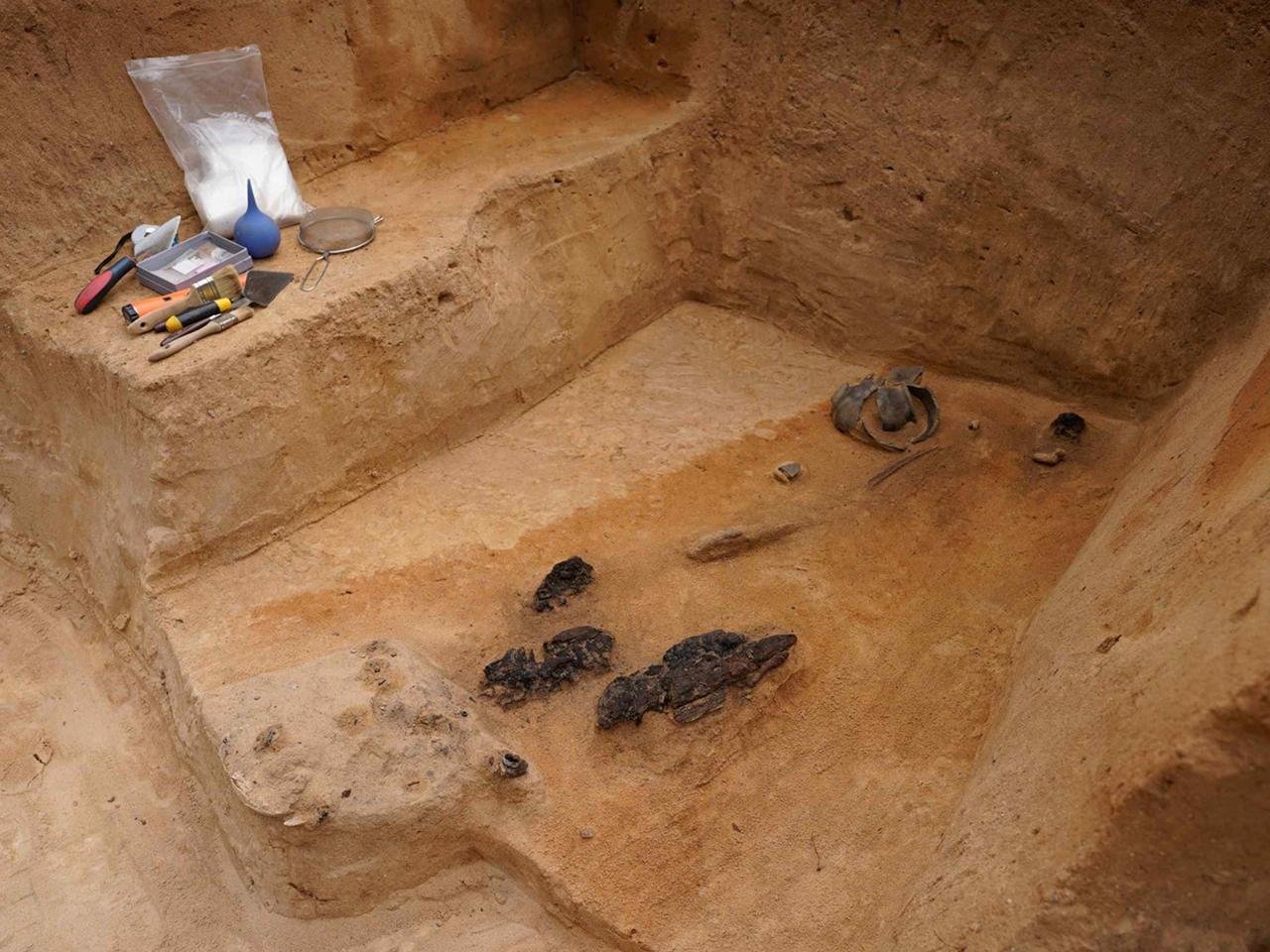Archaeologists have uncovered two graves from the 13th and 14th centuries in Vilnius’ Verkiai Regional Park, Lithuania.
 Archaeologists unearthed two 600-year-old graves with a crown, jewelry and other artifacts at Verkiai Regional Park, Lithuania. Credit: National Museum of Lithuania
Archaeologists unearthed two 600-year-old graves with a crown, jewelry and other artifacts at Verkiai Regional Park, Lithuania. Credit: National Museum of Lithuania
This recent excavation, spearheaded by the Archaeological Projects Center “Antiqua” and overseen by archaeologist Robertas Žukovskis, aims to expand upon findings first revealed in 2008. The National Museum of Lithuania announced the discovery on May 15.
Located on the outskirts of Vilnius, Verkiai Regional Park is known for its lush greenery, dense forests, and historical manor estate. The park’s archaeological significance was initially recognized in 2008 when researchers discovered twelve graves containing artifacts from the medieval period. However, the full extent of the cemetery remained elusive until the recent excavations commenced in the spring of 2024.
The recent excavation unveiled two more graves from the same period, both containing a wealth of artifacts. One of the graves belonged to a middle-aged woman, whose burial was described as “abundant and exceptional” by the National Museum of Lithuania. An X-ray of the grave revealed that the woman was adorned with a crown made of coiled brᴀss, a necklace composed of shells, beads, metal hooks, and various bracelets and rings. Additionally, two keys and a ceramic pot were found near her waist, and a bell was placed near her feet. These items suggest the presence of protective and symbolic artifacts commonly buried with women during medieval times.
 One of the graves found in Vilnius. Credit: National Museum of Lithuania
One of the graves found in Vilnius. Credit: National Museum of Lithuania
The graves were meticulously excavated to preserve both organic and inorganic materials, such as textiles, wood, and leather. Sandra Garšvienė and Dr. Arūnas Puškorius from the Pranas Gudynas Restoration Center of the Lithuanian National Museum of Art performed the initial conservation and lifting of the graves. The artifacts were then transported to the National Museum of Lithuania’s Restoration Center for further examination and preservation. Rapolas Vedrickas, a restoration technologist, conducted detailed analyses, including the use of X-ray technology to better understand the composition and condition of the finds.
The discoveries in Verkiai Park contribute significantly to our understanding of Lithuania’s medieval history, particularly the social structure and customs of the time. The grave goods, including the woman’s elaborate jewelry and symbolic items, resemble those found in other medieval Lithuanian cemeteries, such as Kernavė-Kriveikiškis.
 An X-ray shows the 600-year-old woman’s adornments. Her crowned head is on the right-hand side. Credit: National Museum of Lithuania
An X-ray shows the 600-year-old woman’s adornments. Her crowned head is on the right-hand side. Credit: National Museum of Lithuania
Verkiai’s historical significance is further highlighted by its mention in documents dating back to 1387, when it was referred to as “districtus,” an administrative unit. This historical context enriches our understanding of the region’s development during the formation of the Lithuanian state.
The artifacts uncovered in Verkiai Park will undergo extensive conservation and restoration before being displayed at the National Museum of Lithuania.





